
Being an ISE Area Representative might be a part-time job, but it often feels like it requires full-time energy. Juggling the many tasks associated with recruiting new host families, working with students, and managing everyday issues with current hosts can feel overwhelming for new reps.
Thankfully, there are plenty of ways to better manage your workload, stay productive, and still maintain the work/life balance you likely aimed to achieve when becoming an area representative. Every area rep has a different way they like to organize their time, and no one method works for everyone — but there are a few tools, tips, and tricks that can help you get more done in less time, and with less stress!
Whether you’re searching for ideas on how to better manage your emails, tips for better time-management, or clever ways to organize your daily task list, we’ve got a few ways to help make your working day much more manageable.
Time Management Techniques
Having a hard time staying focused during your working day? You aren’t alone. Just about every professional struggles with time management and procrastination at some point in their career (whether they admit it or not!).
The good news is that there are plenty of well-researched techniques and tips for how to banish procrastination, better organize your schedule and get more done in your day. Here are a few of our favorites:
Pomodoro Technique
Not all of us are the type of people who can sit down and work through our tasks for eight interrupted hours. There’s plenty of research to suggest that this simply isn’t how our brains are wired. Consequently, many of us default to putting things off until we feel “ready to focus”, which often leads to unneeded stress!
This is where the Pomodoro technique can come in handy. Developed by Francesco Cirillo in the 1980s, this popular time management technique breaks up work into 25 minute intervals, followed by 5 minutes breaks.
By deciding how many “Pomodoros” a task will require to complete (that is, how many intervals of 25 minutes), this approach to getting work done keeps you focused on your end goal and helps alleviate the anxiety that often leads to procrastination.
Eisenhower Matrix
Unlike the Pomodoro technique, the Eisenhower Matrix is a method for organizing and prioritizing tasks. So, when you sit down to work and can’t decide what to tackle first, the Eisenhower Matrix can help.
Here’s how it works:

By plotting tasks into four quadrants, each corresponding with an “order” in which to complete them, you can better tackle the important stuff first and the not-so-critical stuff second. This is an especially helpful technique for those of us inclined to finish the easy stuff first, only to feel stressed with difficult tasks later on.
Schedule “Deep Work”
Every one of us has a particular “golden hour” (or hours) during which we are most productive. For some of us, it’s first thing in the morning, while for others it’s later in the evening. Regardless of when you get your best work done, the trick for exceptional time management is scheduling around these periods of hyper-focus, a.k.a. “deep work”. According to Cal Newport, deep work as work that can only be completed with few to no distractions. That’s different than what he terms “shallow work”, which can easily be accomplished even with a few things vying your attention.
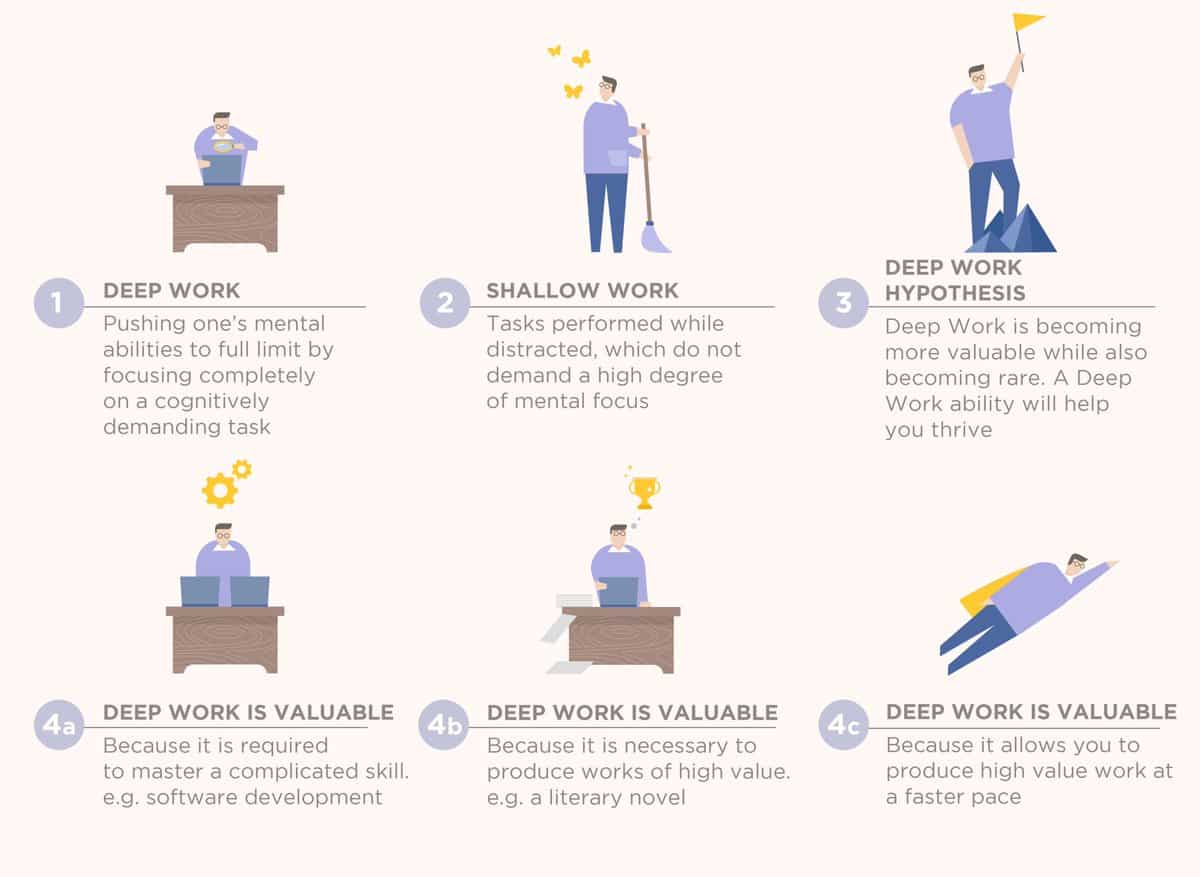
The trick here is to identify tasks as either deep work or shallow work, and then planning your deep work tasks during the time of day you are most productive. Of course, in order for this technique to work, you must truly commit to staying completely undistracted during your “deep work” hours. Noise-canceling headphones, an “away” message on your email (more on this later), and a phone set to vibrate are great ways to cut down on distractions and keep you in the zone.
Free Project Management Software
Even with the best time management skills, creating the perfect workflow often means getting a little help from technology. Though ISE provides plenty of great digital platforms to help organize your communications with students, prospective host families, and leads, an extra platform designed to manage your tasks can be a helpful addition to your digital “suite”.
As more and more professionals rely on digital tools to manage complex projects and tasks lists, online project management platforms are advancing quickly (and here’s the best part: many of them are free!).
Depending on how experienced you are with cloud-based software and mobile technology, different types of platforms work best for different people. Here are some of our area representative’s favorites:
Trello
Trello is a free online task management platform that organizes tasks, projects, and to-do’s into simple “cards”. Area representative’s can add information, color-code, and even attach documents to these cards. Sets of cards can be easily organized into “lists” by simply dragging and dropping them.
Here’s what it looks like:
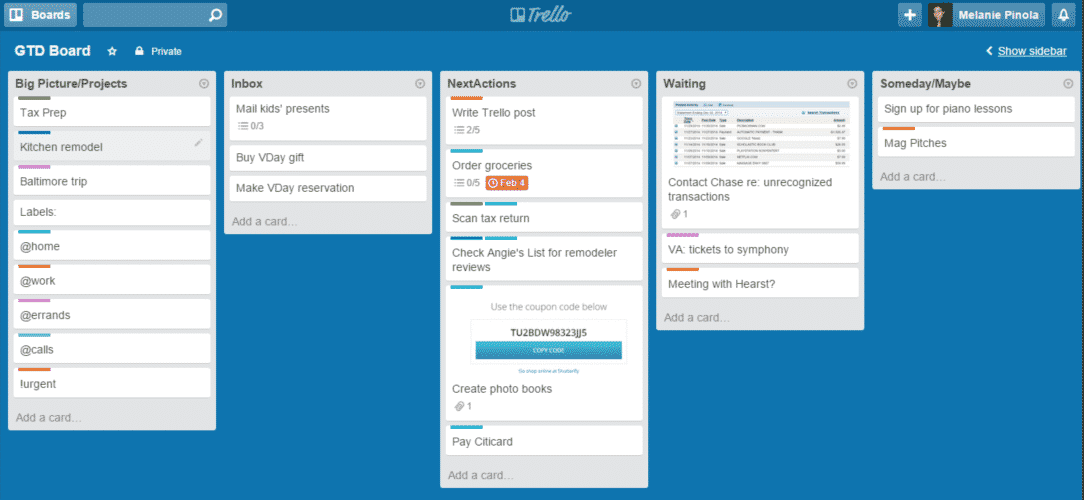
Many people use Trello to organize tasks as “to do”, “doing”, and “done” — but the beauty of the platform is how flexible it is. Think of this as traditional sticky notes on steroids. Rather than plastering your home computer with reminders written on post-its, Trello keeps things organized digitally!
Asana
Plenty of freelancers use Asana as a task management tool because it is both robust and easy-to-use. It allows multiple people to work together, but can be a great tool for individual professionals (like you) that want a bit more bang for their buck.
Asana is organized like this:
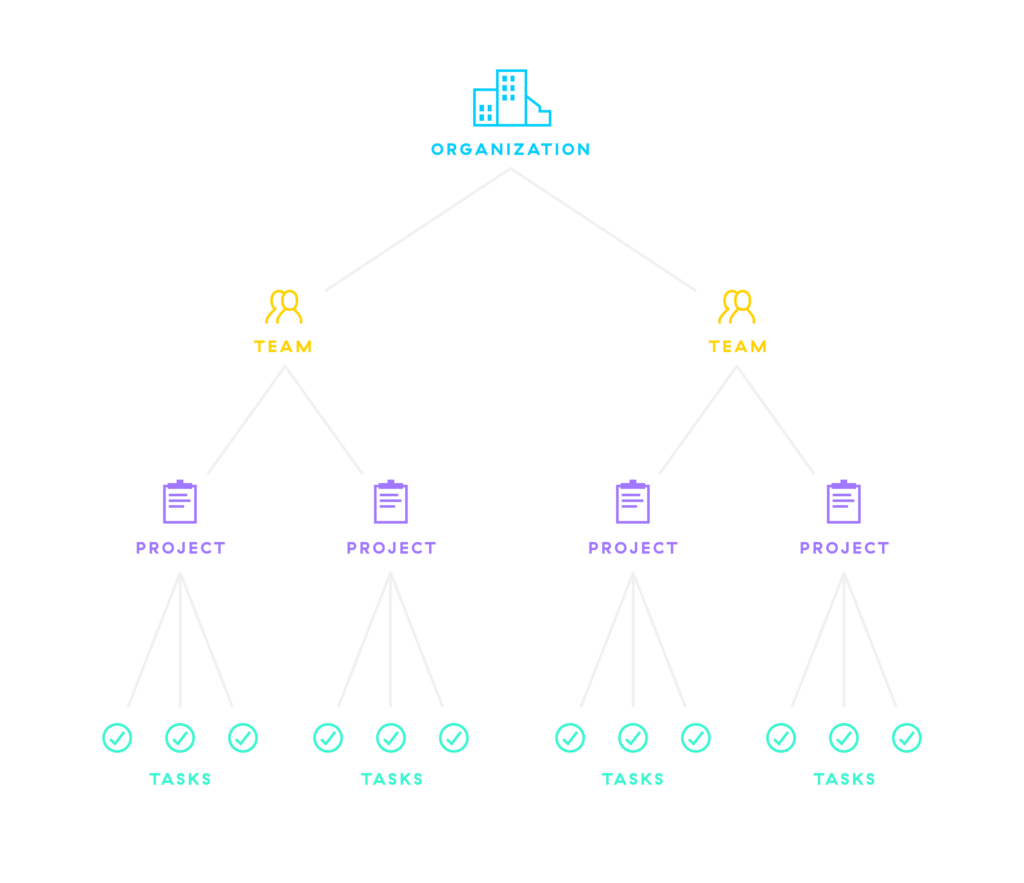
For area reps, one example of how to use this organizational structure is to organize neighborhoods or locations as “Teams”, individual families as “Projects”, and to-do’s associated with that family as “Tasks”.
From there, you can see all of your tasks (as well as which project and team it belongs to) on your main “My Tasks” dashboard, like this:
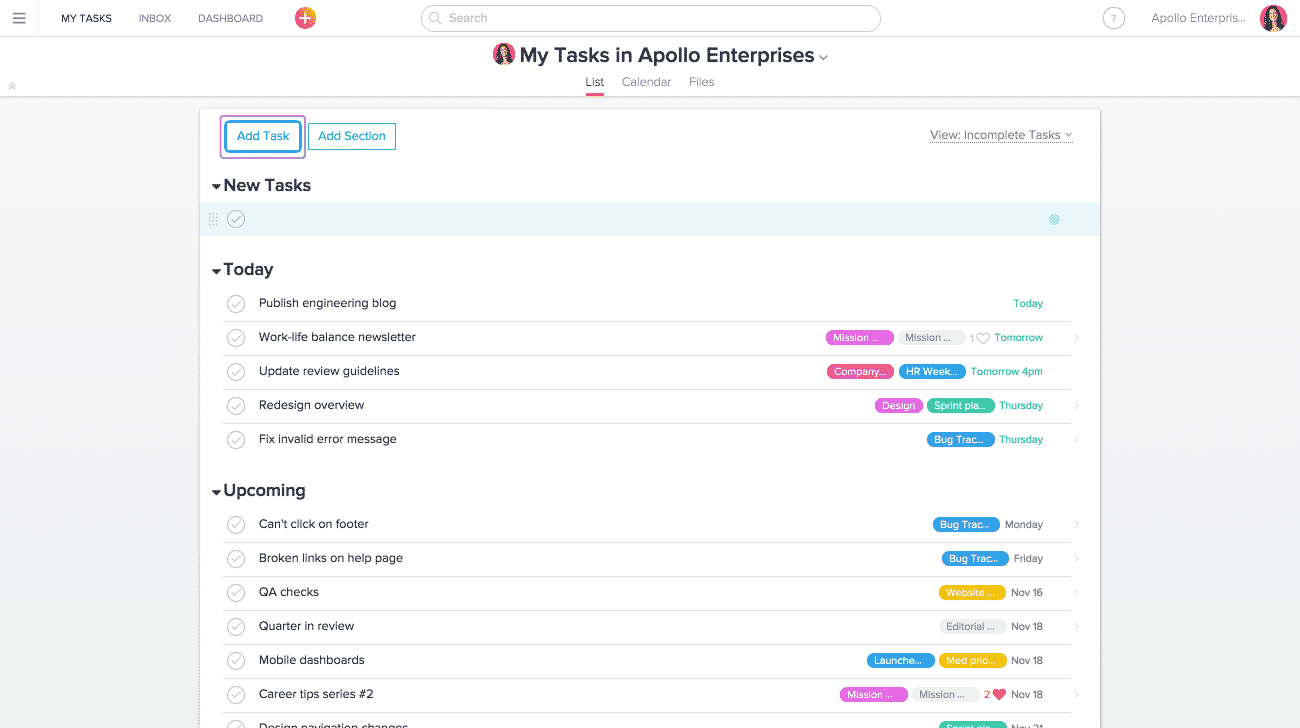
Asana also integrates with email in a clever way, making it easier to manage your email inbox. By simply forwarding an email to x@mail.asana.com, you can turn an email into a task within the platform.
Todoist
Not everyone wants a completely separate task manager to keep track of, and that’s okay. For area reps that value simplicity above all else, Todoist might be your go-to tool. Todoist is a super-simple task list plugin that integrates with most internet browsers and email clients. Plus, it has a desktop and mobile app so you have your tasks organized wherever you go.
Here’s how the desktop app works:
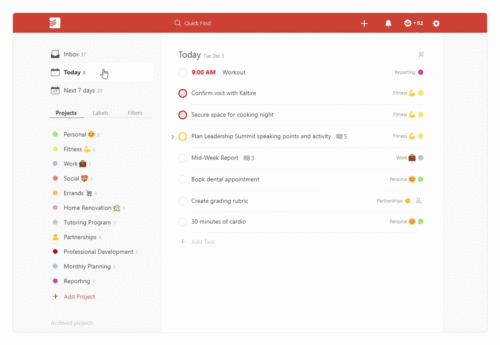
And how it integrates with email:
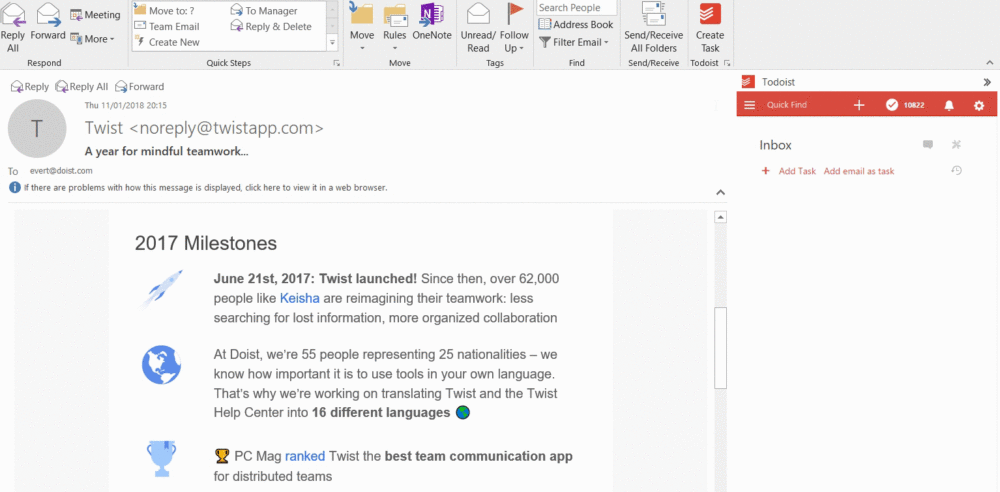
Cool, huh? This makes it easy to mark emails as tasks, then follow up with them on your phone or computer. Todoist doesn’t have all the bells and whistles of Asana and Trello, but it’s an easy way to keep your task list organized.
Email Management Tips and Tricks
Ahh, email. For most professionals, email management is a necessary evil if you want to keep in touch with people that matter to your work — but that doesn’t make it easy. Thankfully, following just a few simple tips can drastically reduce the time you spend reviewing and organizing your emails.
Use Filters and Folders Wisely
Most everyone uses folders to organize their emails, but many find that those folders can do more harm than good. If you struggle to stay on top of emails and often find tasks related to them falling through the cracks, try this tip from Fast Company: ditch the subjects for deadlines.
Here’s what the author suggests for organizing your emails:
Inbox: The inbox is a holding pen. Emails shouldn’t stay here any longer than it takes for you to file them into another folder. The exception to this rule is when you respond immediately and are waiting for an immediate response.
Today: Everything that requires a response today.
This Week: Everything that requires a response before the end of the week.
This Month/Quarter: Everything that needs a longer-term response. Depending on your role, you may need a monthly folder. Others can operate on a quarterly basis.
FYI: Most items I receive are informational. If I think I may need to reference an email again, I’ll save it to this folder.
Make this process even faster by adding filters to certain emails from which you always receive a certain type of email. For example, if there’s an email that sends you a weekly informative newsletter that you usually read when you have spare time, set a filter to always send emails with a specific subject/sender directly to your FYI folder.
Setting “Check Email” times with away messages
Most people struggle to stay on top of emails, especially when senders expect almost immediate replies. In order to reduce the number of urgent emails you receive (many of which are hard to identify in the mess of “not urgent” communication), consider using your automatic “away” message to your advantage.
Try something like this:
“Hello – I check my emails every weekday at 9 AM and again at 4 PM. If you require assistance that cannot wait until one of these times, please contact me at 555-123-4567.”
This way, you know you’ll never miss a particularly urgent email and can better focus on your tasks during the day.
What are your time-saving tips and tricks?
Have a few time-saving tips and tricks you swear by? Share them in the comments and we’ll include them in our next update of this article!
We invite you to read more about what it is like to work with us. If you have specific questions about the area representative role, check out our Area Representative FAQ page.. Still on the fence? Complete our Area Representative interest form and one of our regional managers will get in touch with you to answer your questions and to help you get started.
In addition to working in the student exchange industry, we like to encourage everyone to explore the option of becoming a volunteer host family to host an exchange student.
References:
The Only Five Email Folders Your Inbox Will Ever Need

